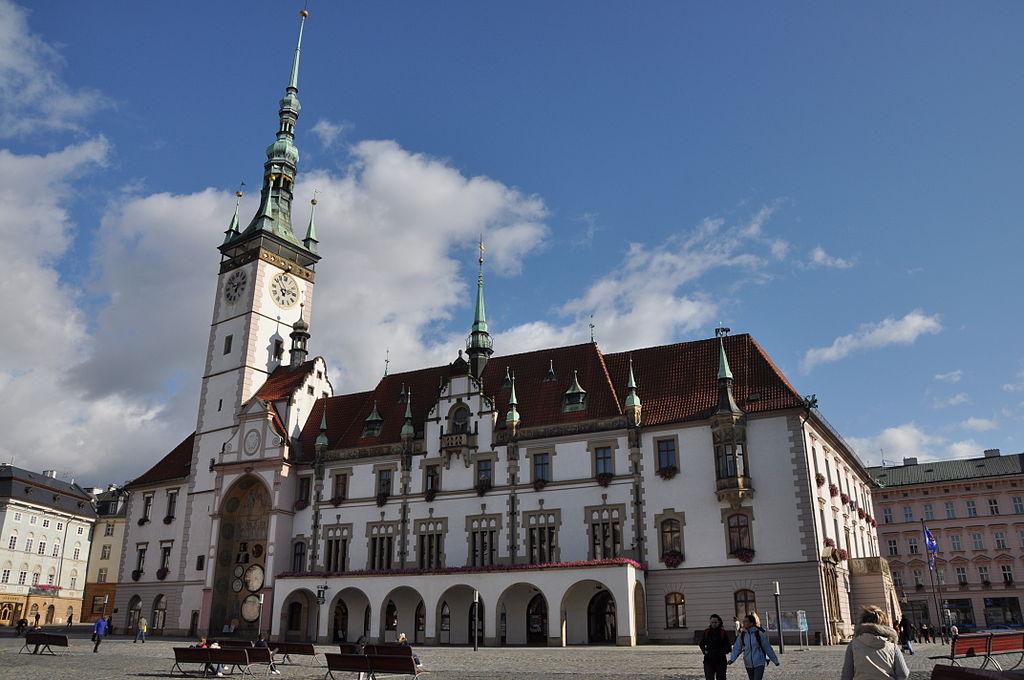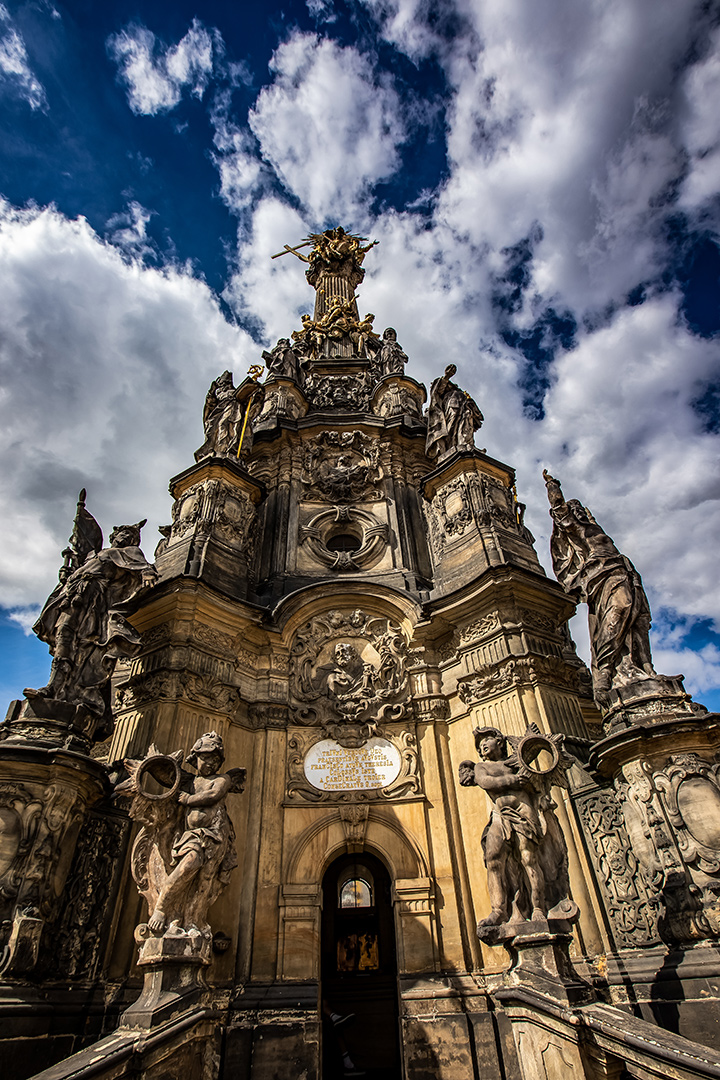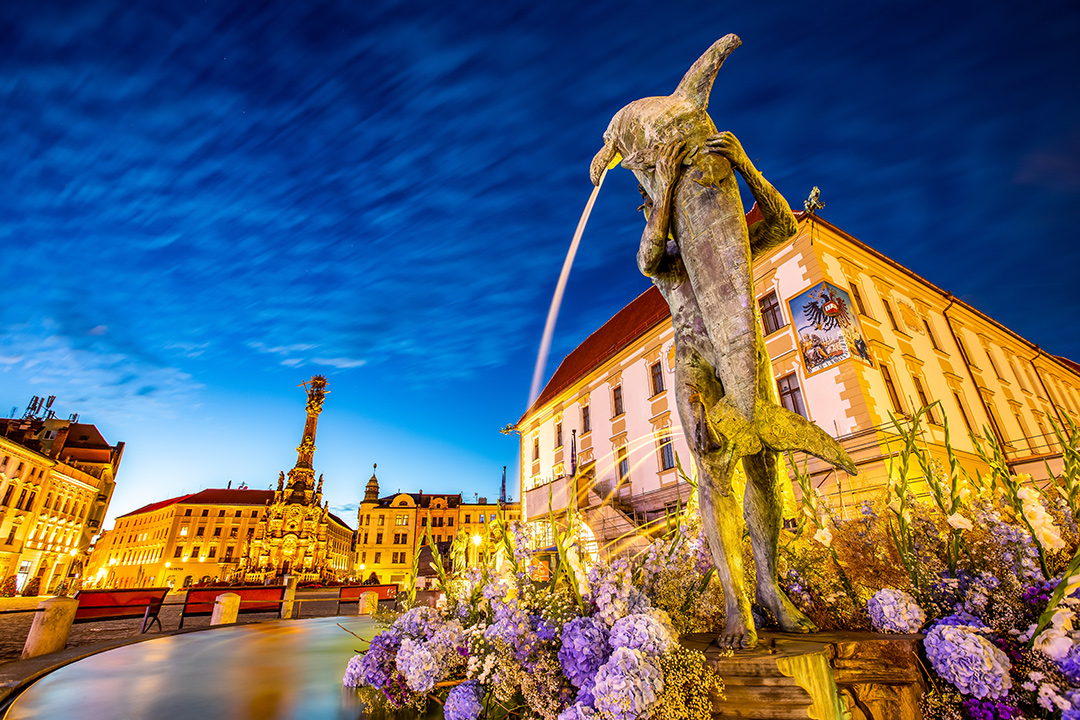City of Olomouc
Festival City
 Olomouc is a royal and academic city with a rich cultural tradition. It is the center of the Olomouc Region and the historical capital of Moravia. More than 100 000 residents are living in the city, which makes it the 6th largest city in the Czech Republic. Olomouc is also the ecclesiastical metropolis and the seat of the catholic archbishopric. The whole historical center is considered the second most significant monument area in the Czech Republic (after Prague). A dominant feature of the historical center is the town hall with the very beautiful and unique astronomical clock.
Olomouc is a royal and academic city with a rich cultural tradition. It is the center of the Olomouc Region and the historical capital of Moravia. More than 100 000 residents are living in the city, which makes it the 6th largest city in the Czech Republic. Olomouc is also the ecclesiastical metropolis and the seat of the catholic archbishopric. The whole historical center is considered the second most significant monument area in the Czech Republic (after Prague). A dominant feature of the historical center is the town hall with the very beautiful and unique astronomical clock.
The city of Olomouc is a very popular touristic destination and a center of culture thanks to its historical atmosphere and many important events. It is the seat of the Moravian Philharmonic Orchestra and the Moravian Theatre. Traditionally the festival of documentary films called Academia Film Olomouc takes place in the city. Some of the other important cultural events are the International Organ Music Festival, the festival Colores Flamencos, the international music festival Dvořákova Olomouc, the Autumn Festival of Sacred Music, and the Flora Theatre Festival. The most important of them is the international choral Festival of Songs Olomouc with almost 50-years of tradition.
History
Olomouc became the prince's seat and one of the main centers in the Middle Ages. In the 11th century, a diocese was established here, where the last male representative of the famous Premyslid family, King Wenceslas III, was assassinated in 1306. In 1573, the second oldest university in the Czech lands was established in Olomouc. The city of Olomouc experienced a great boom during the Renaissance when several magnificent palaces were built here. With 30 000 inhabitants, it was then the second-largest city in the Czech lands. After that, however, difficult times came for Olomouc. During the Swedish siege in the time of the Thirty Years' War (between 1642 and 1650), most of the town was destroyed and the population was killed. The once famous city was reborn in the Baroque period when several important buildings were built (The Holy Trinity Column…) and a set of six Baroque fountains.
 In 1767, a young Wolfgang Amadeus Mozart also lived in Olomouc, after having fled his home due to a smallpox epidemic. He then completed his 6th Symphony in F major in the Haná metropolis. Another important event occurred in Olomouc in 1848, when Emperor Francis Joseph I ascended the throne. This step changed the city beyond recognition, its transformation into a military fortress began, and in the 18th and 19th centuries, it was one of the most important military centers of the Austrian monarchy. In the 20th century, Olomouc went through an alternating period of prosperity and decline. Of course, it was most significantly marked by both world wars and then in 1948 by the onset of the communist regime, during which cultural wealth was neglected, which was not changed until the Velvet Revolution in 1989. The renewed prosperity of the city was crowned in 2000 by the inscription of the Holy Trinity Column on the UNESCO World Heritage List.
In 1767, a young Wolfgang Amadeus Mozart also lived in Olomouc, after having fled his home due to a smallpox epidemic. He then completed his 6th Symphony in F major in the Haná metropolis. Another important event occurred in Olomouc in 1848, when Emperor Francis Joseph I ascended the throne. This step changed the city beyond recognition, its transformation into a military fortress began, and in the 18th and 19th centuries, it was one of the most important military centers of the Austrian monarchy. In the 20th century, Olomouc went through an alternating period of prosperity and decline. Of course, it was most significantly marked by both world wars and then in 1948 by the onset of the communist regime, during which cultural wealth was neglected, which was not changed until the Velvet Revolution in 1989. The renewed prosperity of the city was crowned in 2000 by the inscription of the Holy Trinity Column on the UNESCO World Heritage List.
The Holy Trinity Column
The Holy Trinity Column in Olomouc is a Baroque monument, built between 1716–1754 in the honour of God. The main purpose was a lavish celebration of the Catholic Church and faith, partly in gratitude for ending a plague (1714-1716). The thirty-five-meter high column represents the tallest sculptural group in the Czech Republic and includes a small chapel. In 2000, it was even listed as a UNESCO World Heritage Site as one of the top works of the Central European Baroque.

The Olomouc Town Hall and The Astronomical Clock
The Gothic building of the town hall dates from 1378. It has a Gothic-Renaissance tower seventy-five meters high, Gothic corridors, a large hall, the chapel of St. Jerome, the Gothic bay chapel on the south side, and the Hygie fountain on the west side. Renaissance modifications are from the 16th and 17th centuries: loggia and portal, arcade gallery on a raised tower. The town hall also houses the Olomouc Astronomical Clock from 1420, the current form of the astronomical clock follows a design by Karel Svolinský.
Olomouc Fountains
 Local fountains are one of the jewels of Olomouc. In total, we can find eight of them in the city. They were preserved thanks to the cautious policy of the city council. While most European cities were removing old fountains after they had built their water supply piping, Olomouc decided to keep them as water reservoirs in case of fire. The oldest of them are the fountains depicting Neptune and Hercules from the 17th century. In the 18th century, Jupiter's, Caesar's, Mercury's, Dolphin's fountain, and Triton's fountain were completed. The only modern one is the Arión Fountain from 2002.
Local fountains are one of the jewels of Olomouc. In total, we can find eight of them in the city. They were preserved thanks to the cautious policy of the city council. While most European cities were removing old fountains after they had built their water supply piping, Olomouc decided to keep them as water reservoirs in case of fire. The oldest of them are the fountains depicting Neptune and Hercules from the 17th century. In the 18th century, Jupiter's, Caesar's, Mercury's, Dolphin's fountain, and Triton's fountain were completed. The only modern one is the Arión Fountain from 2002.
Olomouc Palaces
Among the sought-after monuments are also the Olomouc palaces, most of which currently have a Renaissance form. Among the most important are the palaces on the Upper Square (Edelmann's, Petráš's, Dietrichstein's, and Salm's), it is also worth mentioning Zdík's Palace and, last but not least, the Archbishop's Palace.

Olomouc Churches
The city of Olomouc offers several beautiful churches. Among the most beautiful is the Neo-Gothic Cathedral of St. Wenceslas, which is also the seat of the Olomouc Roman Catholic Diocese. Another is the national cultural monument Hradisko Monastery, a former Premonstratensian monastery, which currently serves as a military hospital. Another important Catholic monument is the Church of St. Maurice - a Gothic parish church from the 9th century, which offers a view of the entire historic center of Olomouc from its tower. It is also possible to visit the church of St. Catherine, Dominican Church, Church of St. Cyril and Methodius, Church of St. Gorazd, Church of Our Lady of The Snows and, last but not least, the Church of St. Michael.
Sightseeing related to music
It is also possible to see several monuments directly related to music history in Olomouc. These include, for example, a memorial plaque commemorating W. A. Mozart's stay in the city, or G. Mahler's house, and, last but not least, the magnificent Engler organ installed in the church of St. Maurice.
Contact Us

Application form
I want to register my
choir
I want to register my
vocal ensemble